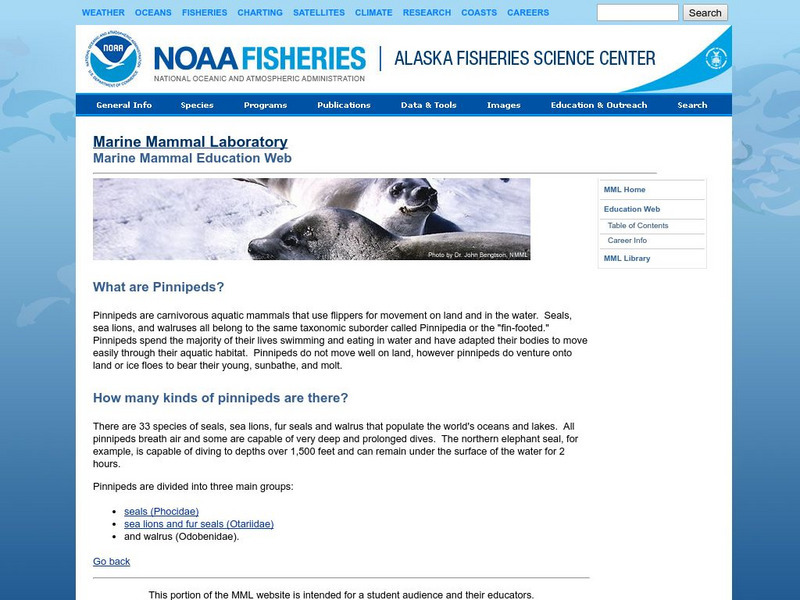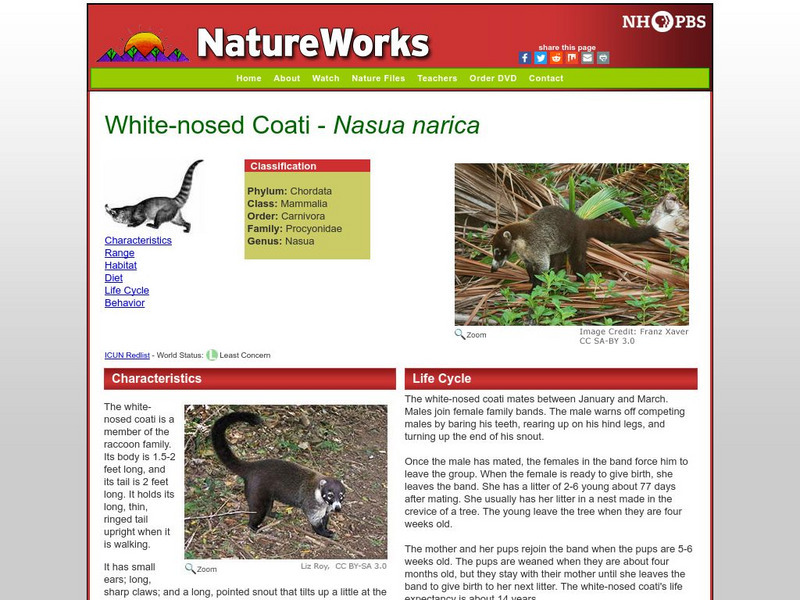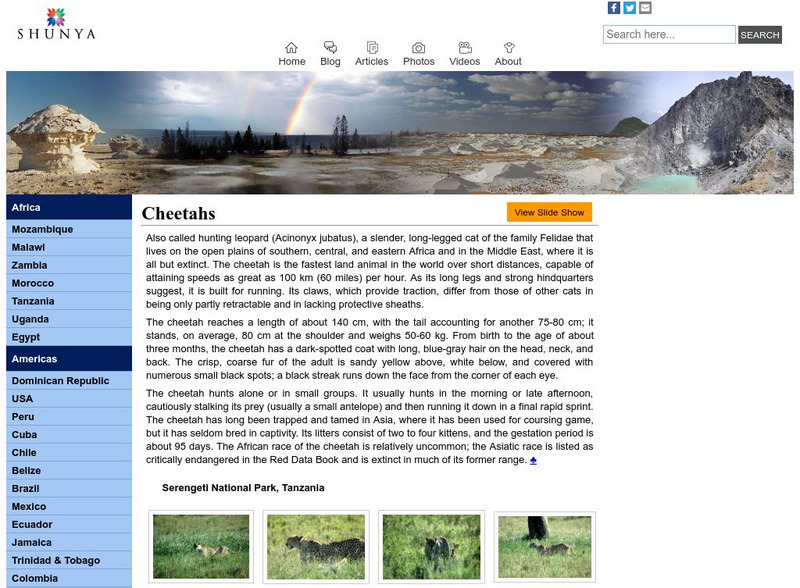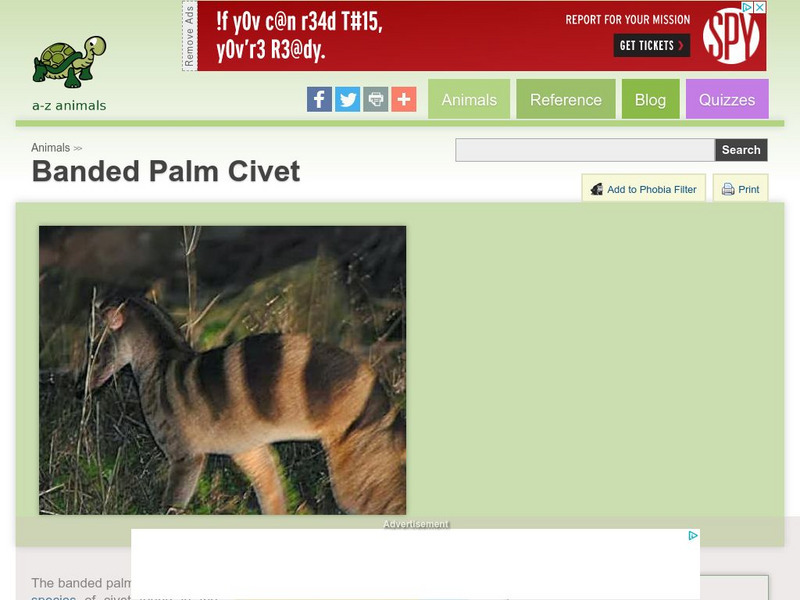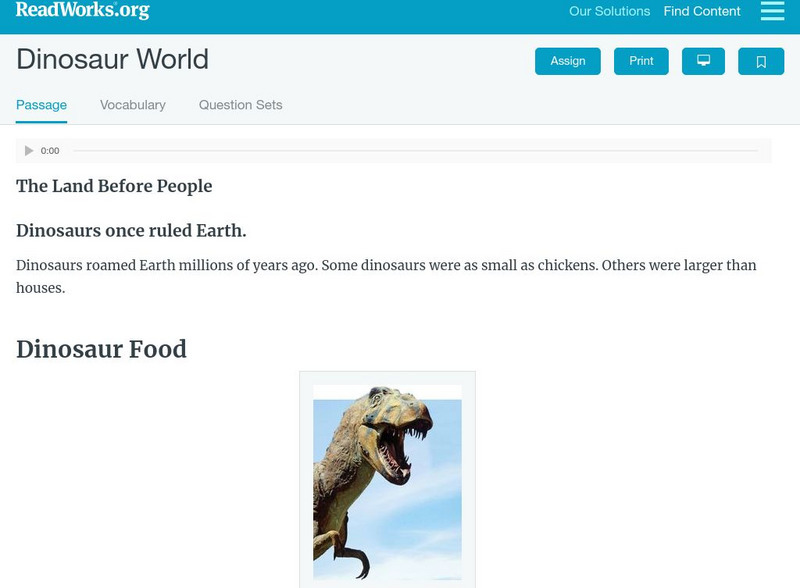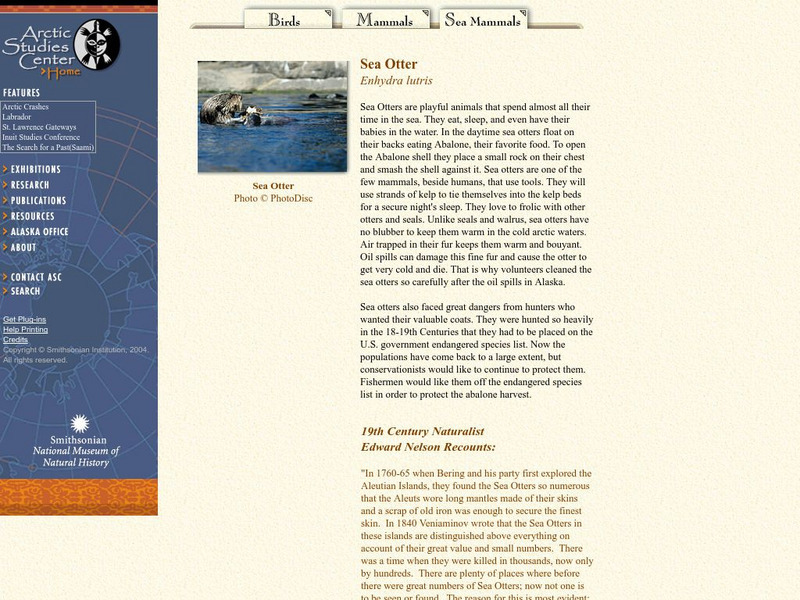Oakland Zoo
Oakland Zoo: North American River Otter
Meet the North American River Otter and discover fascinating facts and statistics. Learn about its physical characteristics, habitat, diet, behavior, breeding patterns, conservation, and more.
Oakland Zoo
Oakland Zoo: Island Flying Fox
Meet the island flying fox and discover fascinating facts and statistics. Learn about its physical characteristics, habitat, diet, behavior, breeding patterns, conservation, and more.
Oakland Zoo
Oakland Zoo: Sun Bear
Meet the sun bear and discover fascinating facts and statistics. Learn about its physical characteristics, habitat, diet, behavior, breeding patterns, conservation, and more.
NOAA
Noaa: Pinnipeds
What are pinnipeds? Learn about seals, sea lions, and walruses; their characteristics, where they live and their differences.
PBS
Nh Pbs: Nature Works: White Nosed Coati
This site features a wide range of information on the White-Nosed Coati. The content of this resource includes a look at this species' characteristics, range, habitat, food, and more.
Chase Young, PhD
Dr. Chase Young, Ph D: Reader's Theater Script: Dinosaur Land [Pdf]
A reader's theater script for Dinosaur Land is provided on these pages. Two character roles are needed in this play that reinforces the difference between dinosaurs that are omnivores and carnivores.
Kidport
Kidport: Who Eats What?
At this site students are encouraged to try and answer questions that relate to what animals eat. At the bottom of the web page are beautiful pictures of land and sea animals and when selected, students will be able to read short facts...
Other
University of New Castle: Omnivores
A description of what an omnivore really eats. There are a lot of related links off to the right.
Other
Shunya's Site: Cheetah
A brief overview of cheetah's size, characteristics and habits are listed on this site. It also provides 20 high quality images of cheetahs in their habitats.
Other
College of Du Page: Energy in an Ecosystem
Ecosystems contain two kinds of commodities: matter (nutrients) and energy. Nutrients cycle through the ecosystem, available for repeated use by organisms. These cycles of use and reuse are called biogeochemical cycles. Energy instead is...
Other
Field Trip Earth: Sri Lanka's Carnivores
Dr. Shyamala Ratnayeke is studying many of the carnivores living in Sri Lanka. She is especially interested in the Sloth Bear. Read many articles covering her field updates, research report, and the research done on the Sloth Bear.
A-Z Animals
A Z Animals: Animal Facts: African Civet (Civettictis Civetta)
Explore images and facts about the African Civet, including details on its evolution, appearance, habitat, breeding, diet, behaviour, and much more.
A-Z Animals
A Z Animals: Animal Facts: Asian Palm Civet (Paradoxurus Hermaphroditus)
Learn facts about Asian Palm Civets, including details on their appearance, habitat, breeding, diet, and conservation status.
A-Z Animals
A Z Animals: Animal Facts: Banded Palm Civet (Hemigalus Derbyanus)
Illustrated entry describes the Banded Palm Civet along with providing details about its habitat, physical characteristics, behavior, diet, and breeding.
A-Z Animals
A Z Animals: Animal Facts: Binturong (Arctictis Binturong)
Provides an overview of the Binturong, including its habitat, appearance, behaviour, diet, breeding, and much more. Images of this species and statistics can also be found here.
A-Z Animals
A Z Animals: Reference: Diet
This entry identifies the defining characteristics of the various diets of animals, including those that are herbivores, carnivores and omnivores.
Other
The International Snow Leopard Trust
Find out about the endangered snow leopard, including leopard photos, habitat maps, and classroom applications.
Read Works
Read Works: Dinosaur World
[Free Registration/Login Required] An informational text about dinosaurs and how scientists learn about them. A question sheet is available to help students build skills in reading comprehension.
Read Works
Read Works: Fossils and Dinosaurs Meat Eaters
[Free Registration/Login Required] This passage describes the characteristics of theropods, meat-eating dinosaurs like the Tyrannosaurus Rex. This passage is a stand-alone curricular piece that reinforces essential reading skills and...
Planet Pals
Planet Pals: The Food Chain
Omnivores, herbivores and carnivores are waiting for you. The food chain comes to life at this friendly site.
Other
Contra Costa County Office of Education: Bats: Why Should You Care?
At this site, provided by the Contra Costa County Office of Education, you can get the facts on bats and their environment.
African Wildlife Foundation
African Wildlife Foundation (Awf): Leopard
Resource takes an exploratory look at the leopard. Content includes information on this animal's physical characteristics, habitat, behavior, diet, caring for the young, predators, and more.
Smithsonian Institution
National Museum of Natural History: Arctic Studies Center Mammals Sea Otter
This Smithsonian website has a brief, but thorough, article on the Sea Otters that also includes a picture and an extensive quote from naturalist Edward Nelson.
BBC
Bbc Science & Nature: Sea Otter
These pictures of the Sea otter are comically adorable. Use this site to read a detailed fact sheet on the sea otter and to check out the photos.



